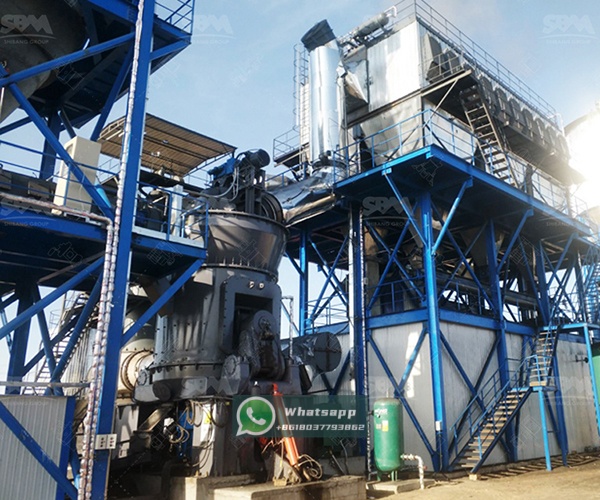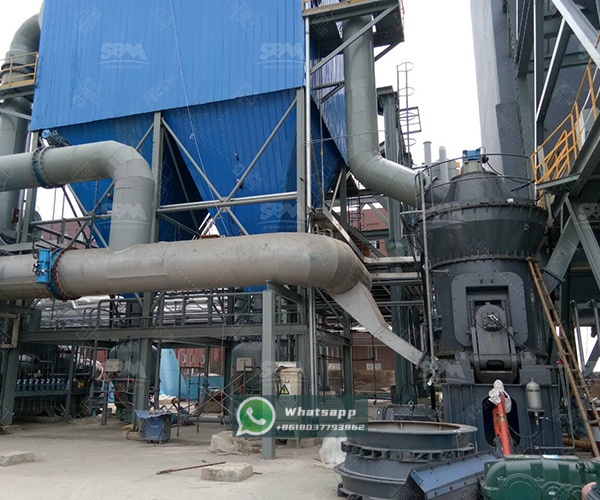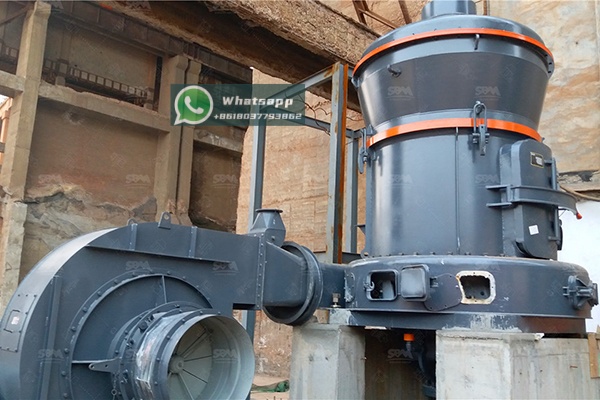The global construction industry is undergoing a significant transformation as it seeks to reduce its carbon footprint and embrace sustainable practices. One of the most promising avenues for achieving this goal lies in the production of low-carbon cement, where Ground Granulated Blast Furnace Slag (GGBS) plays a pivotal role. The efficient grinding of GGBS is crucial, and vertical roller mills have emerged as the technology of choice for this demanding application.
Traditional Portland cement production is an energy-intensive process responsible for approximately 8% of global CO2 emissions. The calcination of limestone and the high fuel consumption required to heat cement kilns are the primary contributors. In response, the industry is increasingly turning to supplementary cementitious materials (SCMs) like GGBS. GGBS is a by-product of the iron-making industry, and when used to replace a significant portion of clinker in cement, it can reduce the CO2 footprint of the final product by up to 50%. Furthermore, concrete made with GGBS offers enhanced long-term strength, improved durability against chemical attacks, and reduced heat of hydration.

While various grinding technologies exist, the vertical roller mill (VRM) offers distinct advantages for processing GGBS into the fine powder required for cement blending. Unlike traditional ball mills, a vertical mill integrates multiple functions—drying, grinding, classification, and material conveyance—into a single, compact unit. This integrated design leads to significantly lower specific energy consumption, often 30-50% less than a ball mill system. For GGBS, which often has a moisture content of up to 15%, the VRM’s integrated hot gas generator provides efficient in-situ drying, eliminating the need for a separate and energy-intensive dryer.
The grinding principle of a vertical mill involves material being fed onto a rotating grinding table where it is ground under rollers. The ground material is then transported by the incoming gas stream to a classifier integrated into the mill housing. The classifier ensures that only particles meeting the required fineness leave the mill, while coarse particles are returned to the grinding table for further size reduction. This efficient, closed-loop system allows for precise control over the final product’s fineness and particle size distribution, which are critical factors for the reactivity and performance of GGBS in concrete.
Selecting the right equipment is paramount to achieving the economic and environmental benefits of GGBS utilization. Shanghai Zenith Machinery Co., Ltd., an excellent manufacturer of ore grinding equipment in China, has made great achievements in the field of ultra-fine powder grinding. With specialization in the research, development, and production of industrial powder grinding equipment, Zenith offers robust and technologically advanced solutions tailored for the cement and slag grinding industry.
For GGBS grinding applications, Zenith’s LM Vertical Grinding Mill series stands out as an exemplary solution. This mill is specifically engineered to handle the abrasive nature of slag while maintaining high efficiency and reliability. Its ability to integrate five functions into one machine makes it a compact and cost-effective choice for new installations or plant upgrades.
The LM series is particularly suitable for GGBS due to its:
For high-capacity GGBS grinding lines, the LM Vertical Slag Mill Series is the optimal choice. Below are the technical parameters for this specific series:
| Model | Capacity (t/h) | Main Motor (kW) |
|---|---|---|
| LM130N | 4-6 | 200-250 |
| LM220N | 20-26 | 900-1000 |
| LM370N | 90-110 | 3150-3300 |

For projects requiring even finer GGBS products to unlock higher reactivity or for specialized applications, Zenith offers the LUM Ultrafine Vertical Mill. This mill represents the pinnacle of grinding technology, integrating ultra-fine grinding, classification, and transportation. It is designed to produce products with a high content of end-fines and features intelligent control for easier maintenance and optimized operation. The LUM series is ideal for producing GGBS with a Blaine fineness exceeding 500 m²/kg, pushing the boundaries of performance in low-carbon concrete.
The deployment of a Zenith LM Vertical Mill for GGBS grinding translates into tangible operational benefits. The mill’s compact footprint reduces civil engineering costs, and its high reliability ensures maximum plant availability. Most importantly, the significant reduction in power consumption directly lowers operating costs and the carbon footprint of the grinding process itself. When this is combined with the CO2 savings from clinker substitution in the final cement product, the overall environmental impact is profoundly positive.

The transition to low-carbon cement is not just an environmental necessity but also an economic opportunity. GGBS is a key enabler of this transition, and its effective utilization hinges on efficient grinding technology. Vertical roller mills, particularly the LM Vertical Grinding Mill and LUM Ultrafine Vertical Mill from Shanghai Zenith Machinery Co., Ltd., provide the technological foundation for producing high-quality GGBS sustainably and cost-effectively. By investing in such advanced grinding solutions, cement producers can significantly contribute to a greener built environment while enhancing their operational efficiency and product portfolio.